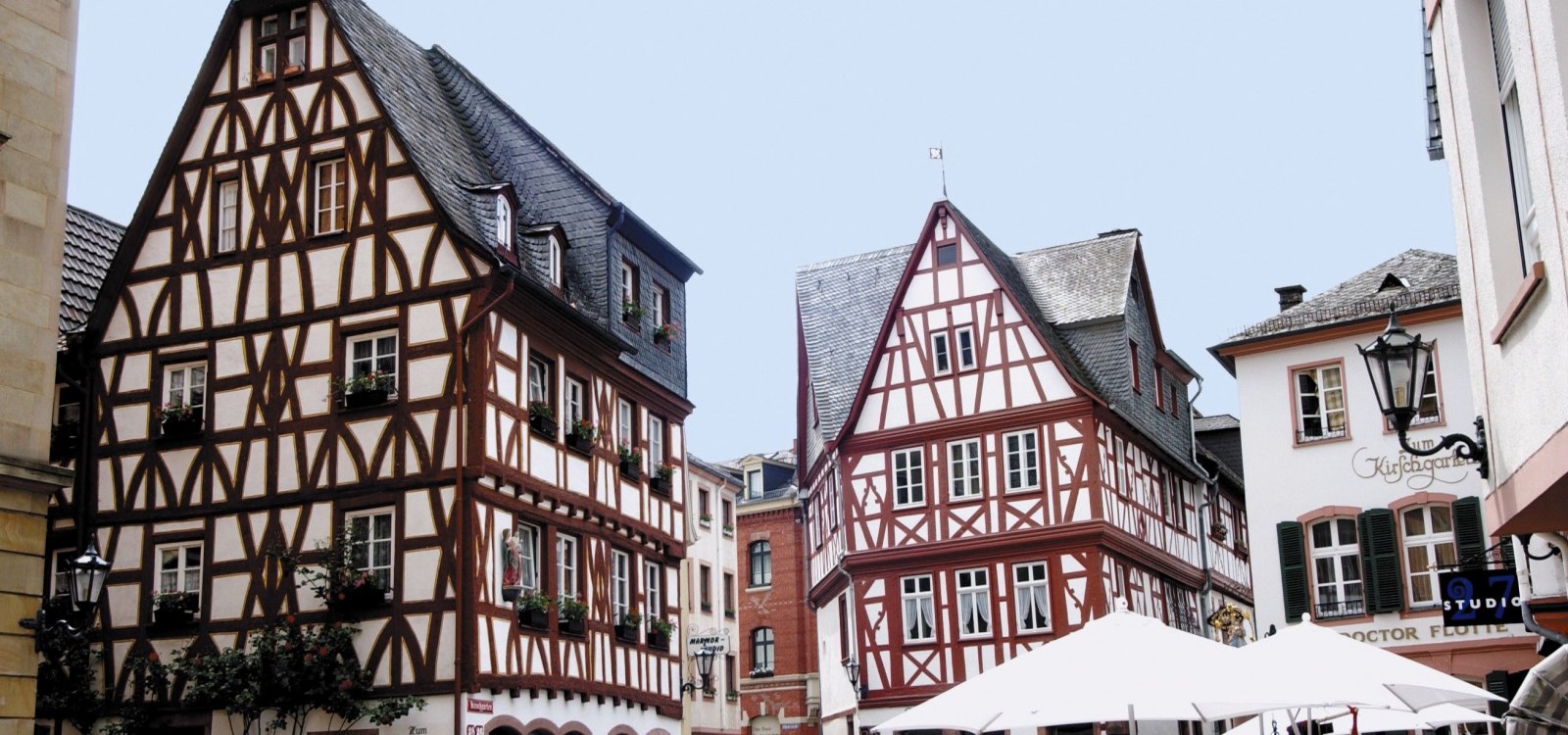The old town of Mainz is marked by its tumultuous history. This is evident in the sight of the medieval cathedral, the old patrician houses, the Electoral Palace, the winding alleys, and picturesque squares. In contrast, the modern buildings - the town hall designed by Danish architect Arne Jacobsen in 1971, the Brand shopping center, the Rheingoldhalle, and Fort Malakoff - testify to the passage of time.
History and culture, bloom and decline over the last 2000 years are reflected in a stroll through the old town. Here, bounded by the course of the former fortification ring, which ran from the Imperial Gate in the north along today's Kaiserstraße and the main train station down to the citadel in the south, the city of Mainz has its origins. "Mogontiacum," "Aurea Moguntia" - the ancient city names and designations still live on today in the memory of the once capital of Upper Germania of the Roman Empire.
War and destruction have repeatedly afflicted Mainz over two millennia - most severely during the years between 1942 and 1945 during World War II. Almost the entire city area lay in ruins at that time. Today, many things have been lovingly rebuilt and restored. It is lively in Augustinerstraße, along the banks of the Rhine, or on market days in front of the impressive backdrop of St. Martin's Cathedral.

searchMenu






